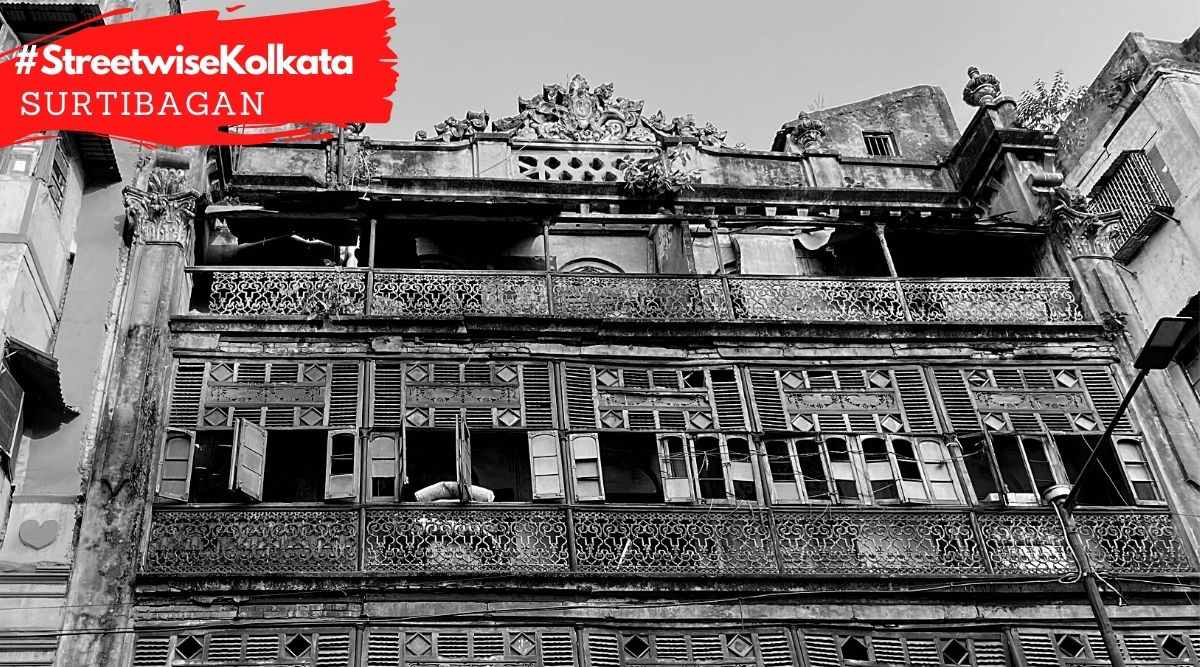 Like with large sections of Burrabazar, Surtibagan Street has historically been a residential neighbourhood where Marwari families have lived for generations. (Express Photo: Neha Banka)
Like with large sections of Burrabazar, Surtibagan Street has historically been a residential neighbourhood where Marwari families have lived for generations. (Express Photo: Neha Banka) Within the microcosm of Burrabazar in Kolkata are streets with their own individual urban histories that tell stories of their settlement, development and gentrification and of the communities that lived there and changed them. Within the heart of this neighbourhood in the center-north of the city is Surtibagan, for which no official street signs exist.
This bylane would be somewhat of a challenge to find unless one searches for it with single-minded devotion. It is among the handful of Kolkata streets for which Google Maps are best ignored and passersby sought for assistance. The entrance is blocked on both sides, not because of any municipal corporation regulations, but by large cargo trucks, stacked with goods up to 20 feet in height, towering over passersby, almost touching the second floors of the houses on either side.
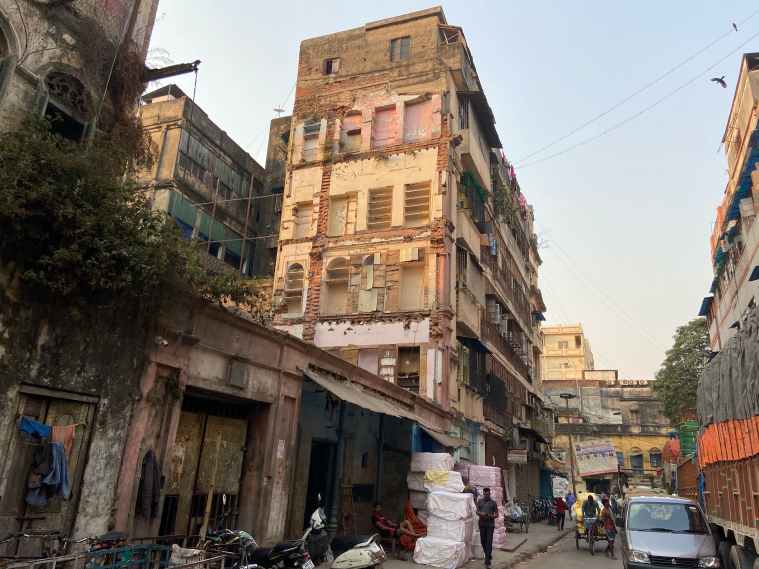 The Surtibagan byline is among the handful of Kolkata streets for which Google Maps are best ignored and passersby sought for assistance. (Express Photo: Neha Banka)
The Surtibagan byline is among the handful of Kolkata streets for which Google Maps are best ignored and passersby sought for assistance. (Express Photo: Neha Banka)
Like with large sections of Burrabazar, Surtibagan Street has historically been a residential neighbourhood where Marwari families have lived for generations.
Over the past two decades however, that has changed. “Nobody is left here. They have all gone,” says Bahadur, a septuagenarian who has lived on this street for close to 50 years.
 The entrance is blocked on both sides, not because of any municipal corporation regulations, but by large cargo trucks, stacked with goods up to 20 feet in height, towering over passersby, almost touching the second floors of the houses on either side. (Express Photo: Neha Banka)
The entrance is blocked on both sides, not because of any municipal corporation regulations, but by large cargo trucks, stacked with goods up to 20 feet in height, towering over passersby, almost touching the second floors of the houses on either side. (Express Photo: Neha Banka)
It is unlikely that the former residents of Surtibagan or even the Marwari community at large, recognise how old the narrow bylane is. In his book, ‘The romance of the Calcutta Sweep’ published in 1930, Henry Hobbs writes that sometime in 1792, the British government advertised a public lottery to gather funds to build a Freemason’s Hall. For that purpose, several large tanks were dug up in central-north Calcutta, “to drain the surrounding land and to furnish earth to fill in other low-lying parts”.
Surtibagan was first established as part of this process. “A garden was purchased and still bears the name of Surtibagan, from Surti (lottery) bagan (garden) while the money for most of the streets in the center of the settlement was raised this way”, Hobbs writes.
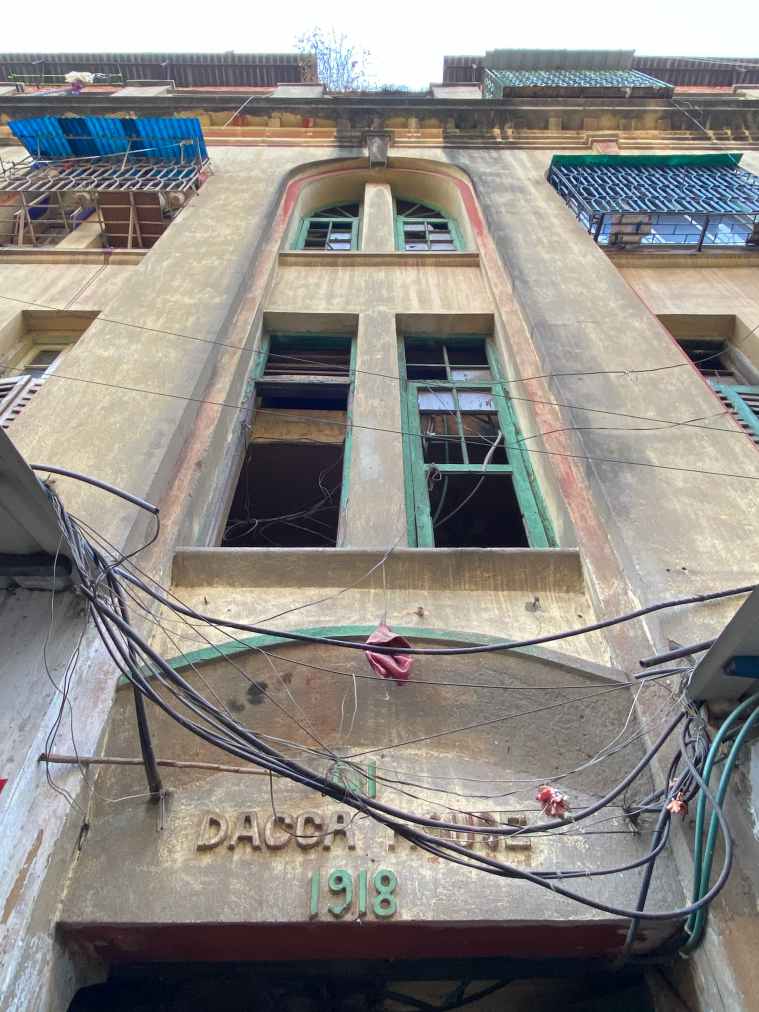 (Express Photo: Neha Banka)
(Express Photo: Neha Banka)
When Marwari traders first set up home in Burrabazar, the houses that they built were modeled in the likeness of the havelis of Rajasthan they had left behind. The sprawling grandeur wasn’t always possible or easy to replicate in the growing metropolis of Calcutta, but enterprising as the community has always been, they made do with what they had and elements of Rajasthani architecture and design fused with the colonial Bengal style are clearly visible in the exterior and interiors of these buildings.
When the Calcutta Improvement Trust was first established in 1911, the first project executed by this trust was the development of Surtibagan. According to municipal records from that time, entries indicate that Surtibagan held the distinction of being one of the “most congested districts” in the city that came under the management of the trust. More than a century later, these characteristics of the neighbourhood haven’t changed.
But change has come to Surtibagan in ways that transformed the demographics and the face of this bylane to an almost unrecognisable degree. Sometime around the 1950s, Marwari families began moving out of their neighbourhoods in Burrabazar into larger bungalows and residential flats of south Kolkata.
While growing families was the justification for this move for some, for others it was a change in fortunes that demanded sprawling accommodation commensurate with their newly-acquired wealth and social aspirations.
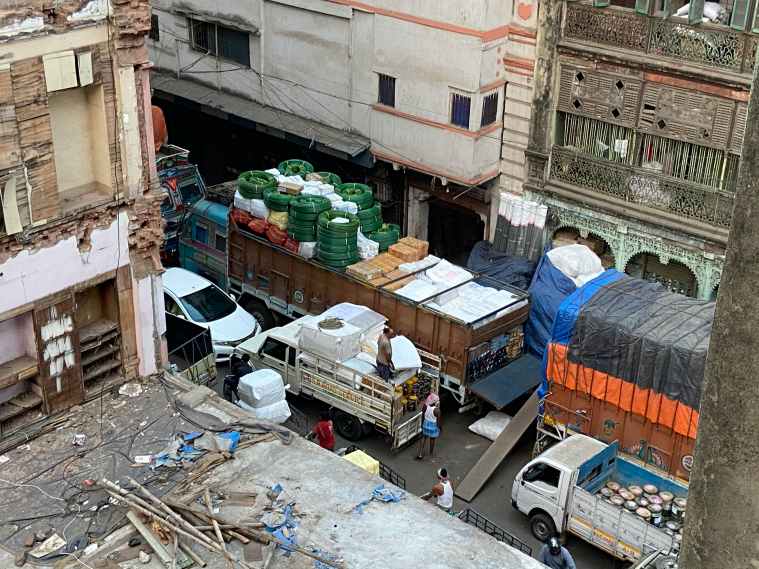 According to municipal records from that time, entries indicate that Surtibagan held the distinction of being one of the “most congested districts” in the city that came under the management of the trust. (Express Photo: Neha Banka)
According to municipal records from that time, entries indicate that Surtibagan held the distinction of being one of the “most congested districts” in the city that came under the management of the trust. (Express Photo: Neha Banka)
Hence Surtibagan witnessed a slow emptying of its buildings, paving the way for its eventual transformation from an upper-middle class Marwari neighbourhood into a commercial bylane.
After the families of Surtibagan began moving out, men like Bahadur who worked in various capacities for them began searching for various other sources of income. Some old employees continue to work as caretakers of the large mansions while supplementing their income with odd jobs that can be found on the street. Having lived in this neighbourhood most of their lives, moving elsewhere isn’t something they can contemplate.
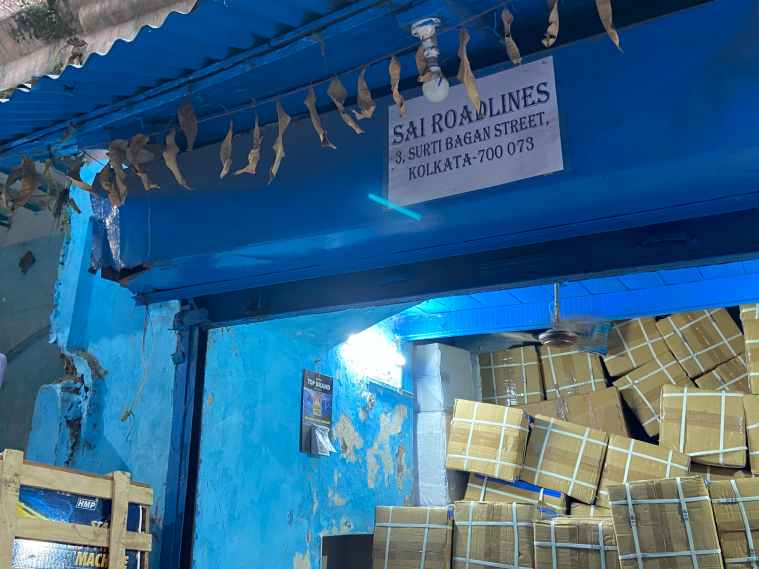 Surtibagan witnessed a slow emptying of its buildings, paving the way for its eventual transformation from an upper-middle class Marwari neighbourhood into a commercial bylane. (Express Photo: Neha Banka)
Surtibagan witnessed a slow emptying of its buildings, paving the way for its eventual transformation from an upper-middle class Marwari neighbourhood into a commercial bylane. (Express Photo: Neha Banka)
The large residential mansions of the Marwaris have been sectioned off into smaller office spaces today, some leased, some purchased, by companies dealing in cargo deliveries and logistical operations. From 9 am to around 7 pm every day, the bylane is entirely blocked by cargo trucks heaped with goods well beyond their legal allowances. Till the bylane clears late in the evening, shouts and calls of truck drivers and their assistants are incessant. Their business waits for nobody, not even passersby, whom they roughly shove out of their way in their haste to load and offload the goods.
When the Marwari families began leaving, the vacuum they created was quickly occupied by these logistics and transport companies searching for space from where they could run their operations without leaving the larger environs of Burrabazar and road space to park their trucks. For the handful of residents who still live on that street, it would have been almost impossible to navigate this small bylane unless they were accustomed to the chaos that has now become a part of it.
The old buildings of Surtibagan, many of which have become decrepit and weathered due to the apathy and lack of care of its residents, intentionally for most, but a result of fragmented, complex ownership for some others, are slowly falling apart. At least one old house has been completely torn down to be replaced by more modern construction, devoid of any characteristics. Those homes that are still standing, are desperately holding on to their histories and to that of this century-old bylane, till their owners decide they have no use for either.
 Continue with Facebook
Continue with Facebook Continue with Google
Continue with Google